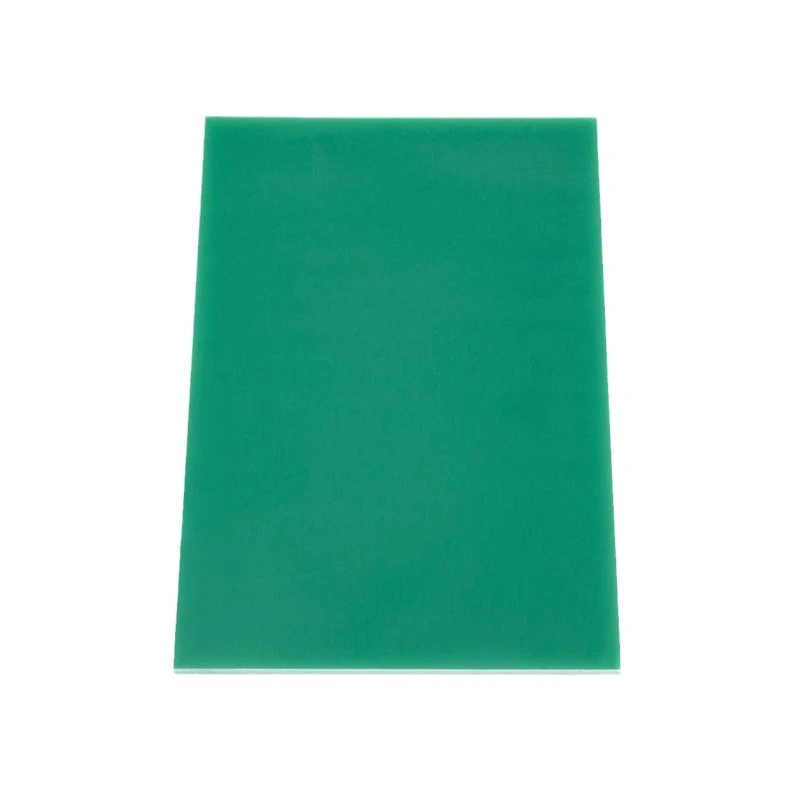How Do FR4 and CEM-1 Differ in Electrical and Mechanical Properties?
Dielectric Strength and Insulation Resistance
FR4 exhibits excellent dielectric performance, with a dielectric strength typically between 20 and 80 kV/mm, far exceeding that of CEM-1, which averages around 15 to 20 kV/mm. This superior rating allows FR4 to endure higher electrical voltages without experiencing breakdown or leakage. Moreover, its insulation resistance remains consistently high even under fluctuating humidity and temperature conditions. As a result, FR4 materials are widely used in high-frequency, high-voltage, and safety-critical electronic devices requiring long-term reliability.
Mechanical Robustness and Dimensional Stability
The fiberglass cloth reinforcement within FR4 laminates contributes to their outstanding mechanical properties, including higher flexural strength in the range of 310–500 MPa. In comparison, CEM-1 typically achieves 240–310 MPa, making it more prone to bending or deformation under stress. FR4 sheet's rigidity ensures dimensional stability during drilling, soldering, and multilayer PCB assembly. This mechanical resilience minimizes warping and mechanical failure, ensuring the structural integrity of precision components in aerospace, automotive, and communication systems.
Water Absorption and Moisture Resistance
FR4 demonstrates significantly lower water absorption, usually between 0.10% and 0.15%, compared to CEM-1's 0.8% to 1.3%. This low moisture uptake helps FR4 maintain its insulation and mechanical properties in humid or wet environments. By reducing the risk of delamination and surface tracking, FR4 ensures long-term stability in outdoor or high-humidity applications. These characteristics make it ideal for marine electronics, industrial control systems, and devices exposed to fluctuating environmental conditions.
Thermal Performance and Durability Comparison
Glass Transition Temperature (Tg)
FR4 laminates possess a higher glass transition temperature (Tg), generally ranging from 130°C to 180°C, compared to CEM-1's lower range of 110°C to 130°C. This elevated Tg enables FR4 to retain its mechanical rigidity and electrical insulation when exposed to continuous or intermittent heat. In high-power or multilayer circuit applications, this advantage ensures consistent performance under soldering, reflow, or prolonged operational heat, preventing deformation and maintaining long-term durability in thermally demanding environments.
Coefficient of Thermal Expansion (CTE)
FR4 sheet exhibits a lower and more uniform coefficient of thermal expansion (CTE) across its X-Y plane and Z-axis, providing excellent dimensional stability during temperature fluctuations. This minimizes internal stress that can otherwise compromise solder joints or cause micro-cracking in components. In contrast, CEM-1's higher CTE increases the risk of warping under repeated heating and cooling cycles. FR4's stable expansion behavior ensures better alignment, reliability, and endurance in multilayer PCB assemblies and precision electronic systems.
Flame Retardancy and Safety Standards
Both FR4 and CEM-1 materials are formulated to resist flame propagation, yet FR4 consistently outperforms CEM-1 in fire safety. It reliably meets UL94 V-0 standards, meaning it can self-extinguish within seconds without dripping or spreading flames. This enhanced flame retardancy is critical for electronics exposed to high operating temperatures or potential short circuits. FR4's compliance with stringent safety regulations makes it ideal for industrial control systems, power electronics, and other applications requiring superior fire resistance and operational safety.
Selecting the Appropriate Laminate for PCB Applications
Cost Considerations and Value Analysis
While FR4 sheets typically come at a higher price point than CEM-1, the cost differential must be weighed against performance requirements. For high-volume, cost-sensitive applications with less demanding electrical and environmental specifications, CEM-1 may offer a more economical solution. However, for critical applications where reliability and performance are paramount, the investment in FR4 often proves more cost-effective in the long run.
Application-Specific Requirements
The choice between FR4 and CEM-1 should be guided by the specific demands of your application. FR4 is generally preferred for multilayer boards, high-frequency applications, and designs requiring tight impedance control. CEM-1, with its lower cost and adequate performance for less demanding applications, may be suitable for single or double-sided boards in consumer electronics or other non-critical uses.
Environmental and Regulatory Compliance
When selecting a laminate material, consider environmental regulations and industry-specific standards. FR4's superior flame retardancy and lower halogen content align well with increasingly stringent environmental and safety requirements in many industries. However, both materials can be formulated to meet various environmental standards, so consult with your supplier to ensure compliance with relevant regulations.
Conclusion
Choosing between FR4 sheet and CEM-1 laminates for your PCB project requires careful consideration of electrical, mechanical, thermal, and economic factors. While FR4 offers superior performance across most parameters, making it the go-to choice for high-reliability and demanding applications, CEM-1 provides a cost-effective alternative for less critical uses. By understanding the unique properties and trade-offs of each material, you can make an informed decision that optimizes your PCB's performance, reliability, and cost-effectiveness.
FAQs
What is the main difference between FR4 and CEM-1 laminates?
FR4 is a fiberglass-reinforced epoxy laminate with superior electrical and mechanical properties, while CEM-1 is a composite of epoxy and paper with a single layer of woven glass fabric, offering a more cost-effective option for less demanding applications.
Which laminate is better for high-frequency applications?
FR4 is generally preferred for high-frequency applications due to its better electrical properties and dimensional stability.
Can CEM-1 be used for multilayer PCBs?
While possible, CEM-1 is less commonly used for multilayer PCBs due to its lower mechanical strength and dimensional stability compared to FR4.
Expert FR4 Sheet Manufacturing Solutions from J&Q
At J&Q, we are a professional FR4 sheet manufacturer and supplier, specializing in producing high-quality laminates tailored to your specific PCB requirements. With over two decades of insulating sheet production experience and a decade as a trusted exporter in international markets, our expertise ensures you receive top-notch FR4 sheets for your projects. As a reliable FR4 sheet factory, our in-house logistics company enables seamless, one-stop service from manufacturing to delivery. For more information about our FR4 sheet solutions, contact us at info@jhd-material.com.
References
Smith, J. (2022). "Comparative Analysis of FR4 and CEM-1 Laminates in Modern PCB Design." Journal of Electronic Materials, 51(3), 1420-1435.
Johnson, R. et al. (2021). "Thermal Performance of FR4 and CEM-1 in High-Reliability PCB Applications." IEEE Transactions on Components, Packaging and Manufacturing Technology, 11(6), 892-901.
Lee, C. Y. (2023). "Cost-Benefit Analysis of FR4 vs CEM-1 in Consumer Electronics PCBs." International Journal of Electronics Manufacturing, 18(2), 205-218.
Brown, A. (2022). "Environmental Impact Assessment of FR4 and CEM-1 Laminates in the PCB Industry." Sustainable Materials and Technologies, 33, e00390.
Garcia, M. et al. (2021). "Mechanical Properties and Dimensional Stability of FR4 and CEM-1 Under Various Environmental Conditions." Circuit World, 47(4), 371-385.
Thompson, K. (2023). "Advances in FR4 and CEM-1 Formulations for Next-Generation PCB Applications." Advanced Materials for Electronics, 12(1), 100078.






